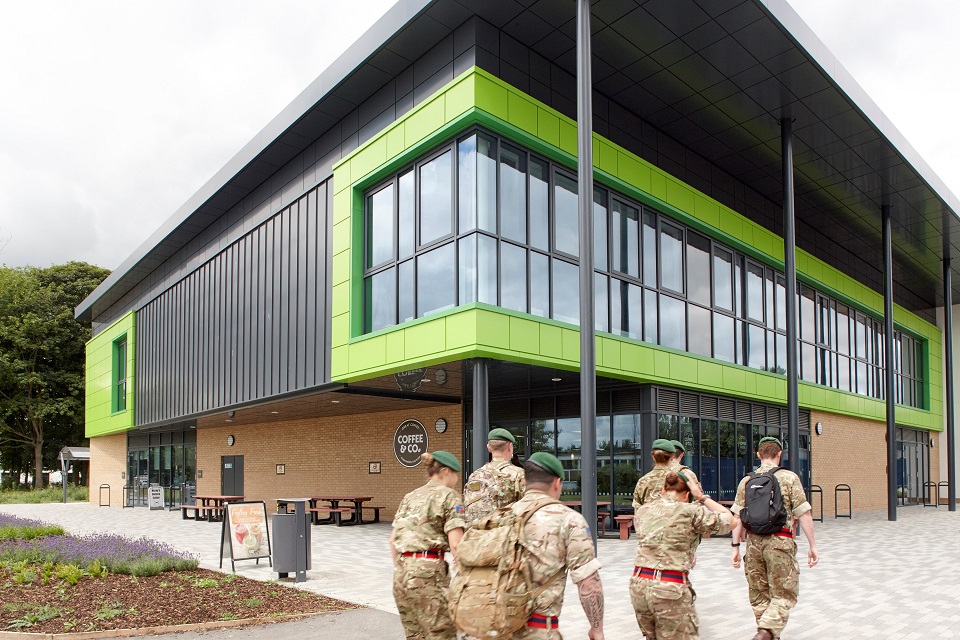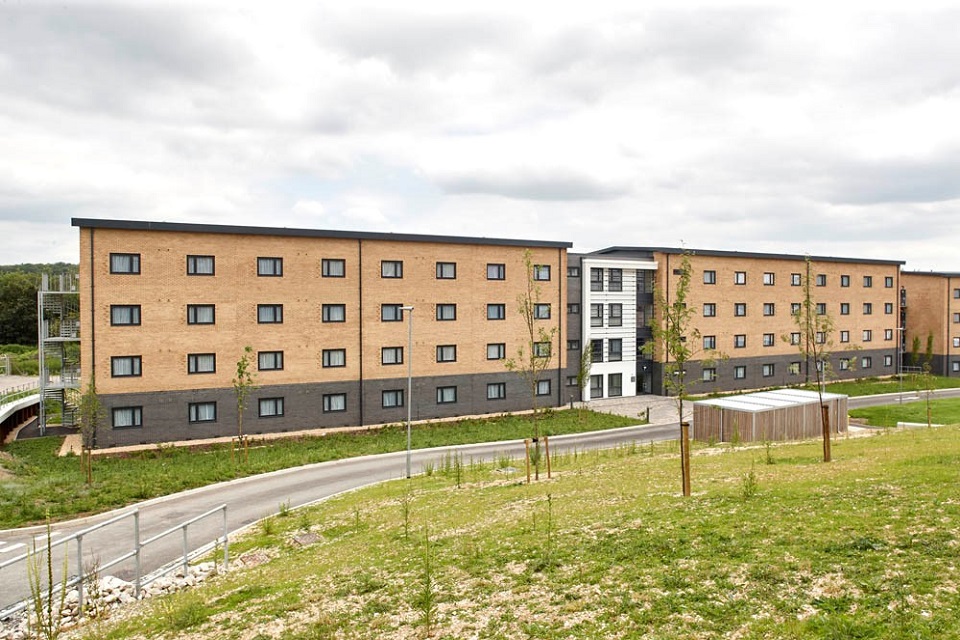News story: Worthy Down camp takes shape as first phase of construction completes
A flagship college, recreational space and high-quality accommodation are all part of the completed first phase of works, part of the transformation of this tri-services amenity.
The new facilities at Worthy Down provide a single location for training and operations, to meet the combined needs of Princess Royal Barracks, HMS Raleigh and RAF Halton.
To date, over 36,500sqm of floor space has been built, creating new surroundings where RAF, Royal Navy and Army personnel can live, work and train.
Using almost 1 million bricks in the process, the Skanska team and DIO have provided the Defence College of Logistics, Policing and Administration with a 154-seat lecture theatre, 60 brand new homes for military people and their families, 755 single-bed spaces in six new blocks and a 358 seat canteen.
The site’s new, larger water tank holds 324,000 litres, almost half the capacity of an Olympic-sized pool.
More than 15,000m of pipes and cables, almost twice the height of Mount Everest, have been installed underground on site to accommodate current and future power, water and drainage needs. New energy-efficient boilers for the camp will also produce enough heat to meet all current and potential future requirements.

Matthew Richardson, DIO Principal Project Manager, said:
DIO supports service personnel by providing and improving single living and service family accommodation so we’re pleased to be working with Skanska to deliver these facilities. Once the new facilities are complete it will enable the MOD to train personnel more efficiently and effectively so that they can provide the best possible support for military operations.
Lt. Col. Ian Bruce, who is responsible for military activities at Worthy Down said:
The facilities provided to date are very good. There is a lot of excitement around the camp regarding the college, recreational space and accommodation and I look forward to welcoming future military personnel to the camp.
Paul Weale, Skanska’s project director, said:
This flagship project is helping the Ministry of Defence (MOD) to provide its people with great places to live and learn. We’re also making a positive contribution to the local community by engaging with schools and community groups. To date, we have worked with over 1,600 young people and we have arranged a number of student visits to the site.
The team delivering Worthy Down camp has also scooped three consecutive national gold awards from the Considerate Constructors Scheme (CCS), which aims to improve the image of construction.

Building Worthy Down is one part of a two-part scheme for the DIO called Project Wellesley. The second is the development of a new community called Mindenhurst, in Deepcut, Surrey, where the MOD is vacating Princess Royal Barracks. Combined, the two parts will help the MOD to rationalise its estate and improve its training provision and living quarters.
